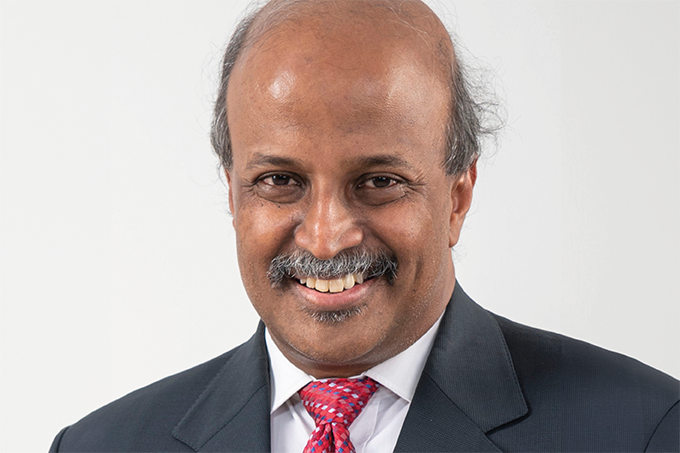Clinical Placement Shortages, Part 2: The Road Ahead
We spoke with Rodney E. Rohde about the long-term outlook for the clinical placement shortage crisis – and what medical laboratories can learn from other industries
The following interview has been edited for readability. Watch the full, unabridged interview video above, or read or watch the first part of our interview with Rodney, where we dive into the crisis at hand and its impact on healthcare and training needs.
What are the potential long-term consequences of clinical placement shortages?
I don’t want to come into any interview with a doom mindset, but it is scary. I’ve been in this field for about 30-plus years now. I started my career in the Department of Health in Austin for 10 years and did some CDC work, then moved into the medical lab and academia for the last 20 years, so I’ve had my foot in both sides of the field, but I’ll mention the public health side here.
Since 2008, the public health workforce has seen about a 20 percent drop in the number of workers; that’s one in five, right? It’s a big problem, and I hope the US understands that. The pandemic did have a positive effect on public health and healthcare funding, but I hope that’s not just a temporary effect. We tend to have knee-jerk reactions in Congress, which is natural when you have an emergency – a pandemic, outbreak, tornado, or otherwise – because you have to get immediate aid to those areas. They flood it with money and resources, but then it goes away after a year or two.
But we need to stop living like that. Prevention is worth a pound of cure, and we need to start thinking about the long-term and create sustainable congressional support for public health and healthcare so we don’t keep running into these issues. That includes funding for scholarships and increasing awareness for college majors in these critical areas – not just nursing and medicine, but with medical laboratory science and public health systems, because nothing happens without our results. 70 percent of everything we do impacts physician and healthcare provider decisions.
Every time a patient enters the healthcare system, their life is in our hands, and we need to get that message across. If we don’t, I worry about the next pandemic. We had a little scare with mpox and we’re now worried about influenza and malaria. Changing environments and climates mean this isn’t going away anytime soon; vector movement and disease is going to start encroaching on other areas and we need to be prepared with stockpiles of medications, vaccines, and resources to get around the world so it’s an equitable response and not just the more economically structured countries.
My concern is that it will impact the morbidity and mortality of our populations if we don’t support medical laboratory professions in both public health and healthcare.
Would you say this post-pandemic boom in funding and resources is still going – or have you seen a drop-off?
There’s certainly a natural slowdown and drop-off, but the US government has put some major funding into the public health system and done some things with healthcare, so I’m watching – as most people in leadership roles are – to see if that will stay at a level that can help maintain it. You don’t have to pump in tons of money, but you do need ongoing funding that matches inflation.
The US pumps trillions of dollars into the military and our defense system – and don’t get me wrong, I’m good with a strong defense – but guess what? Microbes have killed more people than most battles and terrorists combined. Why don’t we take public health as seriously as other threats? Microbes are our enemies, they are a collective global entity that doesn’t care who we are, what we look like, how much money we make, our race, gender, or political party – it doesn’t matter.
A virus only exists to infect you, replicate, and cause damage and destruction. I wish that governments and others in power would understand that that’s our first priority.
You would hope post-pandemic that they would see that threat, but I think it’s one of those that’s out-of-sight, out-of-mind. Hopefully it doesn’t take another pandemic to remind them…
That’s right. Something I’ve thought about my whole career is that if we do too much, if we pour too much money into something and prepare like crazy, we’re looked at as being overzealous. We spent way too much money, we’re wasting money, we’re over-cautious. But if we do nothing, we are looked at as being unprepared. It’s difficult because you’re either way too prepared or you’ve done nothing – and, no matter what you do, you’re going to be judged, so you have to find some common ground.
I think we’ve learned some great lessons from COVID-19, such that transparency is critical. We need to think about multiple streams of supply chains – you cannot be locked into one country or region for your supply, you need to diversify and think collaboratively. In the US, COVID-19 also rekindled some really old coalitions and we’re still meeting sometimes once a month to keep it alive and to talk about other important issues.
Relationships matter in public health. They’re critical. You know how to overcome hurdles when you have people on the team who have lived through it before, so you have a starting point rather than it being ground zero every time something happens. People die when you’re sitting around trying to figure out how to, for example, roll out testing to the country. We have to be better – we must be better at the national and state level and the local level to get those resources out quicker.
Going back to shortages, what successful initiatives or models are being implemented in other countries?
I did some digging into the literature and, interestingly, it seems to be a global problem. I found a couple of articles looking at the UK, Australia, US, and some other places, and when you look at some of the language around the barriers they are dealing with, they are the same problems but different wording. Here’s some of the points: lack of time and heavy workloads; lack of staffing around shifts; lack of management and organizational support; and lack of supervisor training and support.
Sometimes the preceptors – the people on the bench that need to help train the student – have never actually been taught how to be a good preceptor and how to deliver that training, so they’re a little taken aback. They’re already busy and overworked. In the US, we’ve tried to start giving them more resources, such as easier ways to streamline how they document student learning. For example, easier rubrics, or maybe they’re online or on their devices so they can get through it a little quicker to save time and knock down some of the hurdles.
Another thing we are seeing in the US is that big programs will offer online didactic coursework. Everybody loves online, right? That’s fine for lectures, but when you start to think about laboratory understanding and how to acquire basic skills like clinical gram stains, CBCs, or type and matches for blood transfusions, these are life-saving skills – you can’t not do them well when you’re teaching students, so you can’t teach it online. They really need to get hands-on practice, even in the academic setting, so that when they go to their clinicals, they hit the ground running with at least some level of both practical and theoretical knowledge.
It’s a very one-on-one type of thing. It’s not easy to crank out a hundred people with one teacher. It needs one-on-one time, or maybe one-on-two or -three. You can’t get too high with your ratios. But we’re really busy, so how do we bring in more students a year? It’s a complex problem that we’re working on.
I can also mention a solution we’ve been talking about in the US, but let me give you an example first. I get 30–40 applicants and I can only take 20. Maybe 50 miles away, there’s another program that’s getting 10 applicants but they have 15 or 20 slots. I’m now recommending my applicants to them, and we’re also starting to look at making it more purposeful, like a national or state database, so programs and hospitals are communicating in real-time: “You have five more students that are adequate? Please send them our way!” Maybe we can provide some support for education funding or give them a part-time job so they’ll come move to San Antonio, for example, and go to our program and help fill our quota.
We’re just trying to help fill up programs because we don’t want any programs with empty spots. We want to at least fill the quota and then start finding ways to stretch; for example, this fall, we’re taking 22 students. Over time you start building some capacity to help the hospital systems, but I don’t think there are any major quick fixes unless we can somehow work with big industry reference labs. They tend to have more money than academic centers, so maybe they can help improve the issue.
I’ve mentioned to colleagues and leaders that we should probably also look at the military because they have ways to create and crank out sometimes hundreds of nurses, physicians associates, or medical labs in one area pretty quickly. They are very efficient in how they run things. We need to look at what people are doing in other industries that’s working well and not stay in a silo. Just because we’re healthcare doesn’t mean we can’t learn from them – what are they doing to improve numbers and turn things around? We’re starting to try to listen and learn – and keep working with our funding and communication to help shorten those gaps and improve our numbers.
I always tell people that you can’t build a medical lab scientist overnight – you can’t even build one in a year. It takes time – the same way it does with nurses and physicians. It’s so important that you don’t have empty slots because, if you’re down eight people then that impacts you for years. You can’t back up and get those people, you need a full class – a full cohort – every time.




